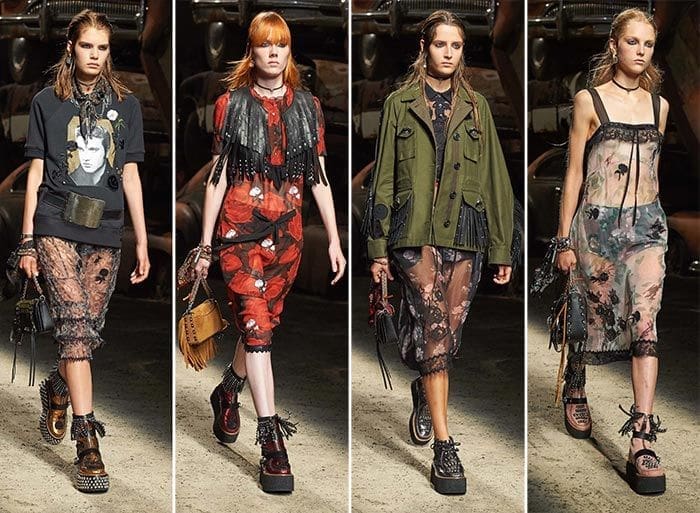The story behind the emergence of grunge on the runway begins like this. True fans of grunge—the loud ‘Seattle sound’ born in America’s Pacific Northwest during the late 1980s—and the recalcitrant talents who unwittingly gave the world grunge style, didn’t imagine, or more importantly, want what they represented to end up on the catwalk. But it happened anyways.
The outsider genre that went ‘pop’ in the early 1990s originally rose out of the ashes of punk rock and the chaos of heavy metal in a rainy place that, by the 1980s, touring bands refused to visit (going only as far as San Francisco, some 800 miles south). Long before middle-class teenagers from New York to Tokyo were wearing slouchy Nevermind T-shirts, this yet-to-be-named scene serviced local musicians—and it was feverishly high-jinx. The humour (a mix of arch wit and outright goofiness) and wisdom of grunge originals Mudhoney, Green River, Nirvana, Pearl Jam and Soundgarden would later be misconstrued as nihilism by the mainstream media, meaning that most of the world missed the point—that the music at the centre of the movement had kind of begun as an inside joke between self-satirising Seattle bands who purposefully never used more than three chords in any one song and sang about being sick, as Mudhoney’s Mark Arm deadpans in Doug Pray’s 1996 documentary Hype!

For early audiences (made up mostly of other local bands), witnessing the fun that grunge acts had while performing was both the dissolving solution and the ultimate retort to the banalities of suburban life. The question is: how did it become ‘chic’?
In spite of the mass commodification of the grunge ‘uniform’, the clothes bands wore on and off stage were a pretty regular rendition of Seattle style at the time—just, perhaps, a little off. Before long, the baggy T-shirts and long johns caught on (thanks to the underground hype created by record label Sub Pop) and grunge became emblematic of a changing America eager to dismiss the glamorous ideals of the 1980s that didn’t deliver in reality.
Footage of Kurt Cobain—the antithetic poster boy of grunge—at the first public performance of Smells Like Teen Spirit shows the Washington native wearing a nondescript flannel shirt over a nondescript T-shirt (standard logger territory attire). His hair was red at the time, or at least it looks red in the club’s lighting.
The fashion world caught the mood when Nevermind, Nirvana’s second album, was released in the autumn of 1991. By the next year, grunge-like layering made its way down the runway at Calvin Klein on an 18-year-old Kate Moss. Soon after, plaid, proportion-play and silhouettes that hinted to suburban thrift (including shrunken babydoll dresses and antique-styled slip dresses) became a catwalk staple at New York Fashion Week where, just as in music, a changing of the guard was taking place. Then in SS93, Marc Jacobs chose to showcase an all-grunge-themed collection for American sportswear label Perry Ellis. In less than 30 minutes, Jacobs had put a spoke in the wheel of high fashion, offering something entirely accessible that mirrored the universal youth movement that was in full flow. It was a show that, both got him fired and made his career.
This is your recap of the runway moments that were born out of high-fashion admiration for the authenticity and anarchy of grunge.

